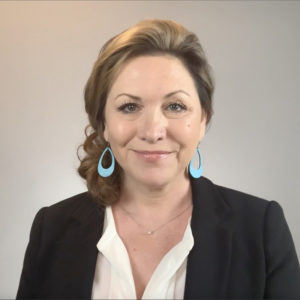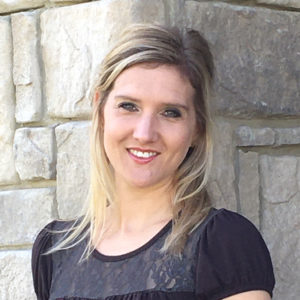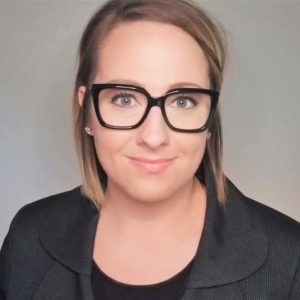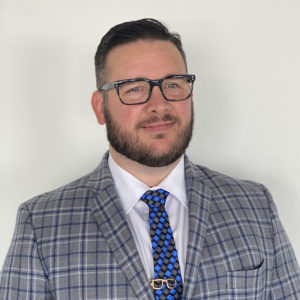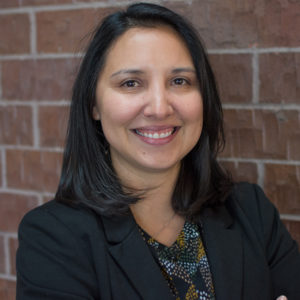#1: Hiring a consultant is expensive and time-consuming.
Fact: Not only can hiring a consultant can reap a fast, significant and sustainable return on investment, HEA’s PracticeAdvantage program is affordably priced to put these services within reach.
HEA’s PracticeAdvantage allows HEA members to approach consulting with a time and financial commitment that is precisely right for them.
“I don’t think there’s any piece of equipment you can purchase that will have a quicker or greater return on investment over time,” says Gilan Cockrell, OD, FAAO, CEO of Williams Group. “The expectation to see 22 percent growth in total revenue in one year is realistic, and some clients have seen 100 percent growth.” Over the years, he and his group have run numerous ROI calculations and practice performance evaluations on pieces of equipment, “and I haven’t seen anything that has the same ROI as a consultant. I’d say that the only thing that would make engaging a consultant an unwise cost is if you don’t follow through on implementation.”
The benefits come because the consultants work with IECPs on precisely the issues that are creating the largest pain points. So many business owners feel an immediate sense of relief when they realize that remedies are within reach, says Williams Group President of Consulting Robin Elliott. “Some owners want or need a more intensive program or integrated practice help. Others may simply need staff training and to touch base monthly with a coach for questions that arise. Either way, we listen to your needs and then provide options that work for your circumstances,” she says.
Just as consultants’ plans are not one-size-fits-all, neither is the time commitment. To start, an IECP will need to gather some financial data from their profit and loss statements and other financial and policy documents. From there, the PracticeAdvantage coach works with the IECP and key staff members to formulate a plan to review and decide on actions. If there are multiple action steps, they can be implemented at a pace that is comfortable for the practice.
PracticeAdvantage coaches also bring their considerable expertise in other matters. For example, as business owners were scrambling to learn how to navigate the Paycheck Protection Program and other government programs, many were trying to do so as they could, gleaning information from various sources on the web, Dr. Cockrell says. Consultant Shaun Damico picked up his phone and began calling various government agencies and representatives, investing his time to get the answers his clients needed. “Consultants can commit the time to study those issues that you don’t have time to,” he says.
#2: Hiring a consultant means I’m unable to manage my practice myself.
Fact: HEA’s PracticeAdvantage program enables you to tap into the experiences of others to accelerate your own timetable to success.
Dr. Cockrell says, “Some business owners engage a consultant because they need help to improve their practice’s operations and systems, while many other optometrists may already be strong in this area. But a coach can help by taking the experience of others – not one or two others but hundreds of others – to accelerate the timeline and reduce the chances of miscues. It’s a chance to have a second (or third) set of eyes look at the business and help determine how to best incorporate the changes that will help the practice owner expedite success.”
Consultant Elliott agrees, noting that nearly every IECP comes into business ownership as a neophyte. “You don't know what you don't know,” and there’s no shame in saying so. “Not admitting that you might need help in certain areas is a greater danger, and when there’s such tremendous opportunity that HEA offers with PracticeAdvantage, why not feed off those years of experience?”
#3: A consultant will attempt to remake my practice to fit his or her cookie-cutter mold.
Fact: PracticeAdvantage coaches do not come in with a preconceived approach; plans are formulated collaboratively with the practice owner.
Elliott emphasizes that the owners’ goals are the consultants’ goals. “We want to help your practice support the life you want, so first we help you define your goals and then we work together to make the fundamental changes that will help you achieve those goals.”
Consultant Bess Ogden knows that the notion of implementing change can initially be intimidating, but it’s important to understand that PracticeAdvantage consultants don’t have preconceived notions of what a practice is or should be. “We don’t have one solution that we try to apply in all situations; rather, we have a broad range of proven best practices that have helped IECPs in many different situations. We learn about the client and what they need and want, and only then do we work collaboratively with the practice owner to develop a game plan for fulfilling the owner’s vision,” she says.
Maintaining a flexible mindset is key to this process. “We might say, ‘Based on our work in other practices, let’s take these next steps.’ These are proven strategies that have worked elsewhere, but that doesn’t mean the practice is obligated to follow the identical formula, and the decision-making power remains with the owner. “
#4: My business is too small to make it worthwhile.
Fact: Consulting isn’t limited to mega practices. If you’ve got goals and want to reach them efficiently and more quickly, working with an advisor can help.
Damico says that the first question he asks prospective clients is what their wishes are. One client said she wanted to pay herself $100,000 rather than the $50,000 she paid herself last year. Upon reviewing her benchmarks for revenue and expenses, he realized that if the practice owner simply paid herself first and made modest changes to her spending, her current practice revenue was already more than sufficient to support her income goal. The problem wasn’t revenue but that the practice revenue was being diverted to outsized budgets for cost of goods and other expense categories, he says. “What we do is analyze what you want – whether that’s how much money you want to net, how many patients you want to see each day, or how many days a week you want to work. Then we can reverse engineer the way to get there.”
“Help us understand what’s most important to you, and we can help ensure that your practice supports the life you want,” is the Williams Group mantra that best summarizes what the group can do for its clients, says Elliott.
Similarly, those IECPs who feel that they’re not quite ready for a consultant or aren’t prepared to make the time investment in the process will appreciate the customizable aspect of PracticeAdvantage. “That’s a question we ask: how much time to do you want to invest? Some practices want a monthly call to check in or would like to make use of our online learning library or staff training. We can do that,” says Elliott. “And if a business owner needs us to be more integrated into the office with weekly meetings or integration of the plan, we can make that happen, too. We give you options of what’s achievable,” she says.
#5: Consultants don’t understand the intricacies of my business.
Fact: PracticeAdvantage coaches specialize in understanding the intricacies of business – and they have the experience of working with many different types of practices to customize a plan for each client.
Although every eye care business has unique qualities, there are common threads and trends among them, such as staffing concerns. “Before we created our online learning library, Williams Group conducted a needs assessment with its clients. Training for the staff and human resources support are almost always at the top of everyone’s list, says Robin Elliott
Some practice owners default to this myth because they themselves don’t quite recognize the intricacies of their business that may be hampering their ability to fully reach their goals or even to precisely define those goals. An advisor can help. “Many clients can’t articulate their goals, but they do have a sense of their pain points: turnover, earnings, the work environment, staff training,” Elliott says. “They don’t know how to narrow these down into attainable action points, and that’s where we play an integral role in giving definition to the plan.”
Experienced consultants look at so many profit and loss statements, employee assessments, and other key measures that they can bring a new perspective to someone who feels stuck by what he or she has tried before or what a friend has done.
Consultant Damico adds that while he typically does a deep-dive financial analysis, that’s not essential to getting started. “The first thing we do beyond basic data-gathering is have a conversation about the practice. Initially, the pain point may be that the IECP feels that patients are waiting too long, but as we discuss it further, we discover other areas that are contributing to that wait time. Then we can help prioritize a plan of action.”
That cannot be achieved by observation alone. “In order for us to help you, you must help us to understand the intricacies of your business. Thus, we take the time to get to know your goals, culture, financials, etc. and only then do we provide you with a plan of action.”
#6. The results don’t last.
Fact: With continuity, lasting results are achieved and cultural changes take hold.
Consultant Ogden has worked with many longtime clients who have successfully achieved such fundamental change and improvement in previous phases of working together that her current interactions with them tend to be brief – but still highly valuable. “The continuity value is huge. I may spend just one hour with them every four weeks, but I know what they’re working on and can help with course corrections as needed,” she says. The inclusion of Williams Group’s online learning library is a significant asset here, and it’s available to HEA members through PracticeAdvantage. “I may see that there’s a new hire, and we’ll quickly plug that person into the online training. There’s continuity there insofar that all staff members are trained similarly.”
Plus, as practices evolve and goals shift, a consultant can help a business make the small adjustments that are needed to advance to the next level more quickly.
With businesses that have experienced backsliding, that happens if accountability isn’t built into the program. “We work to teach everyone the leadership skills to manage their goals. We can teach good goal-setting and create accountability so that the business has the follow-through that is necessary for success,” Damico says.
It’s also important to consider the alternative: not taking action. “Maybe you want to keep your business small, and this is OK,” says Elliott. “However, we can help you optimize efficiencies and patient retention in a way that keeps your schedule full. PracticeAdvantage is designed to be an affordable program that gives you the control to design your life based on your lifestyle, personal and professional preferences, and financial needs. And… if you have dreams of growing into a million-dollar practice or even more, we can help you strategically grow to meet this goal too.”
 800.676.9076
800.676.9076
